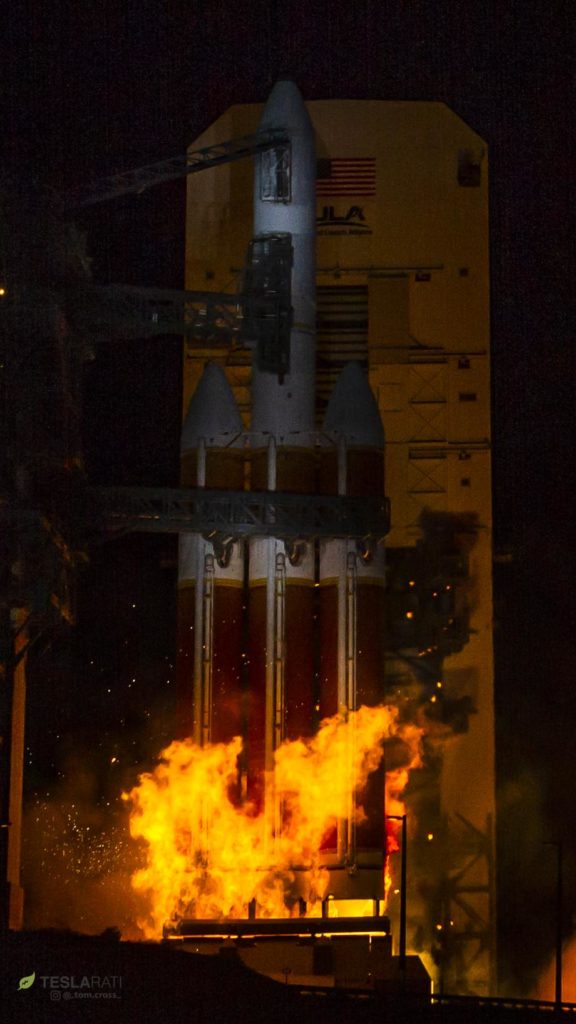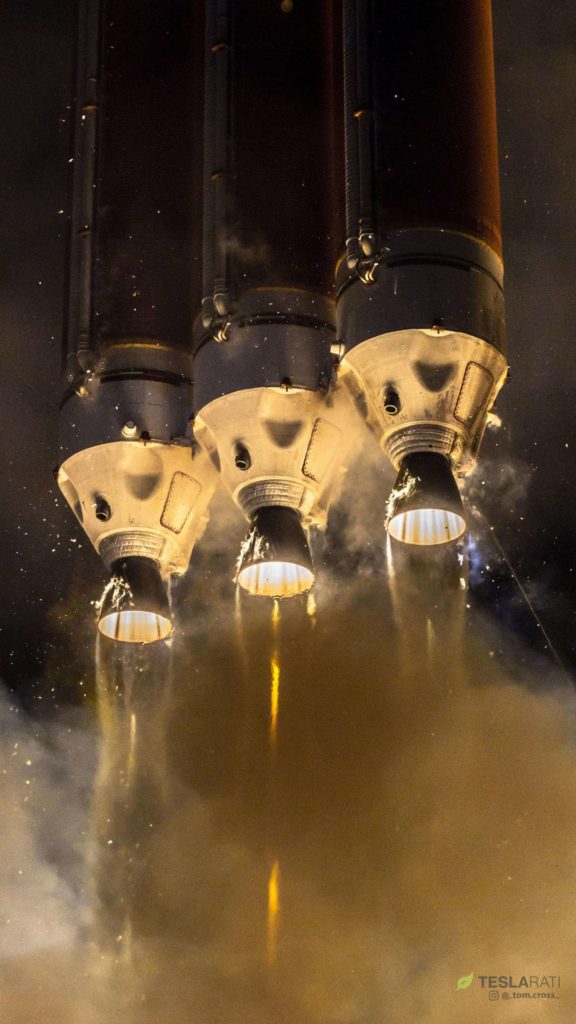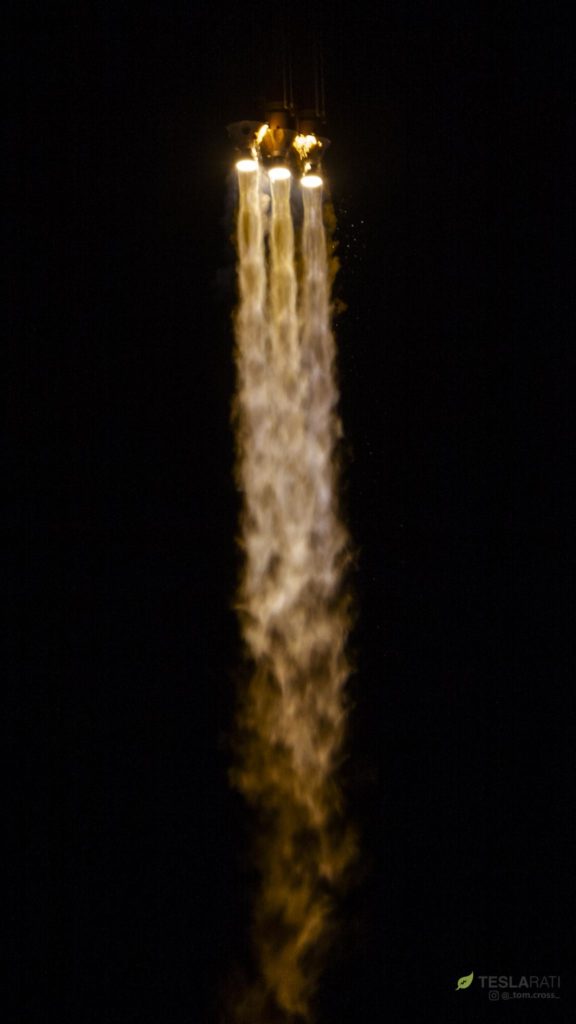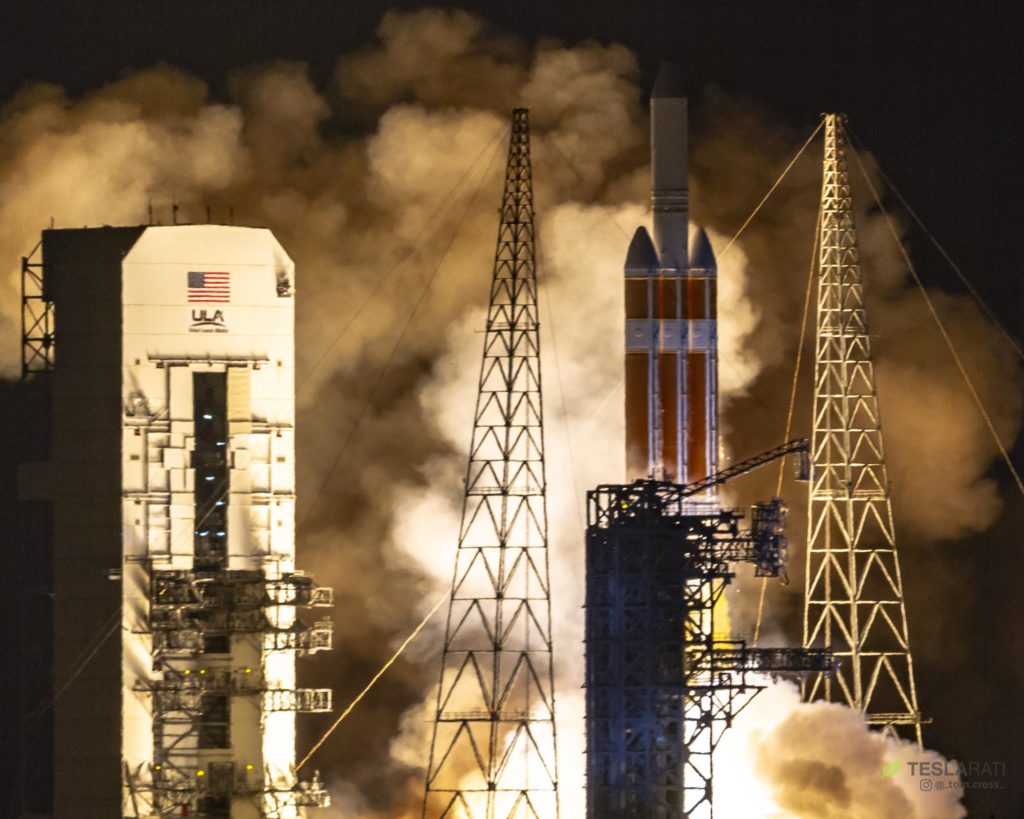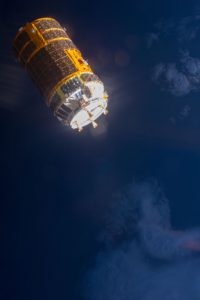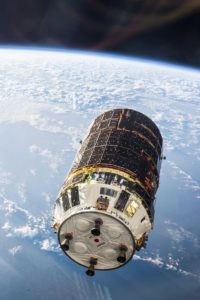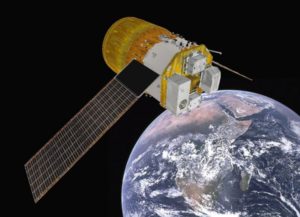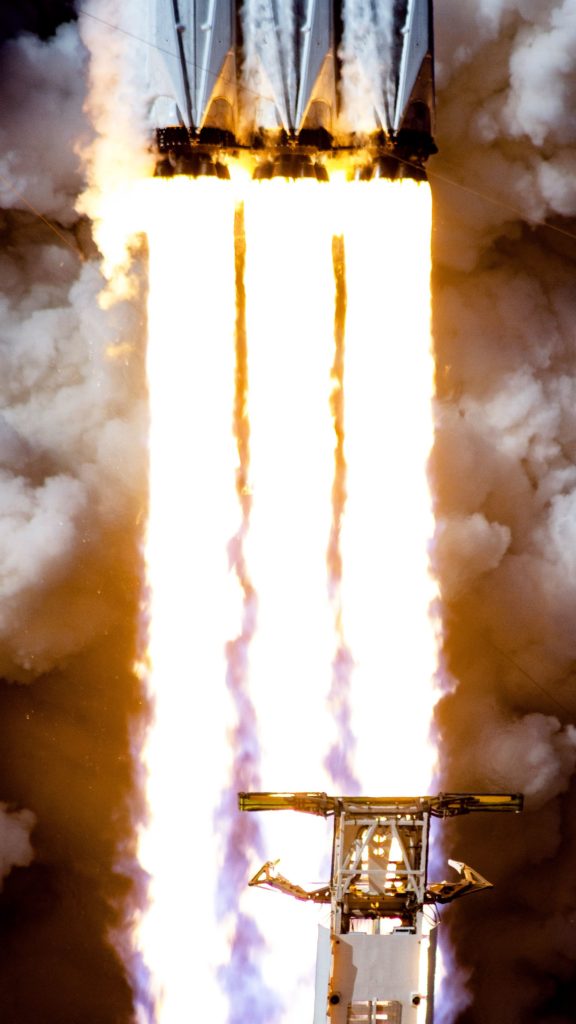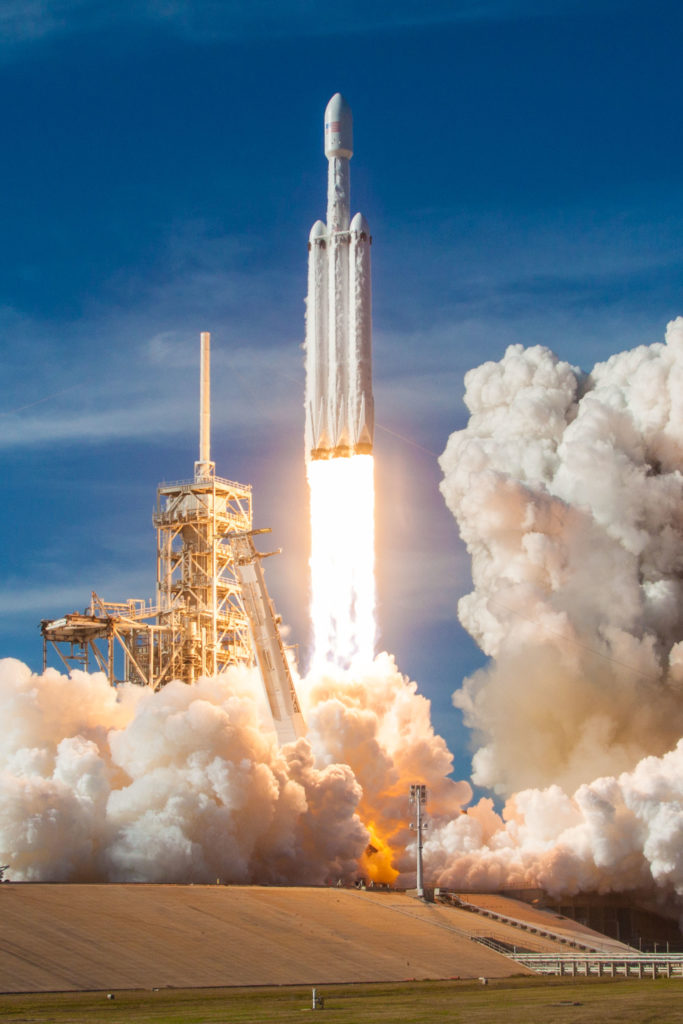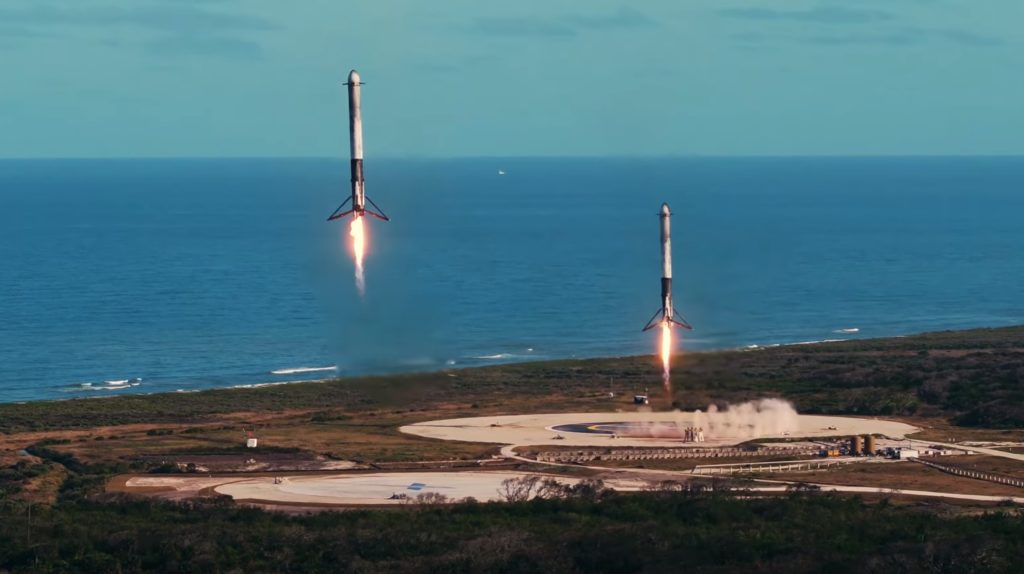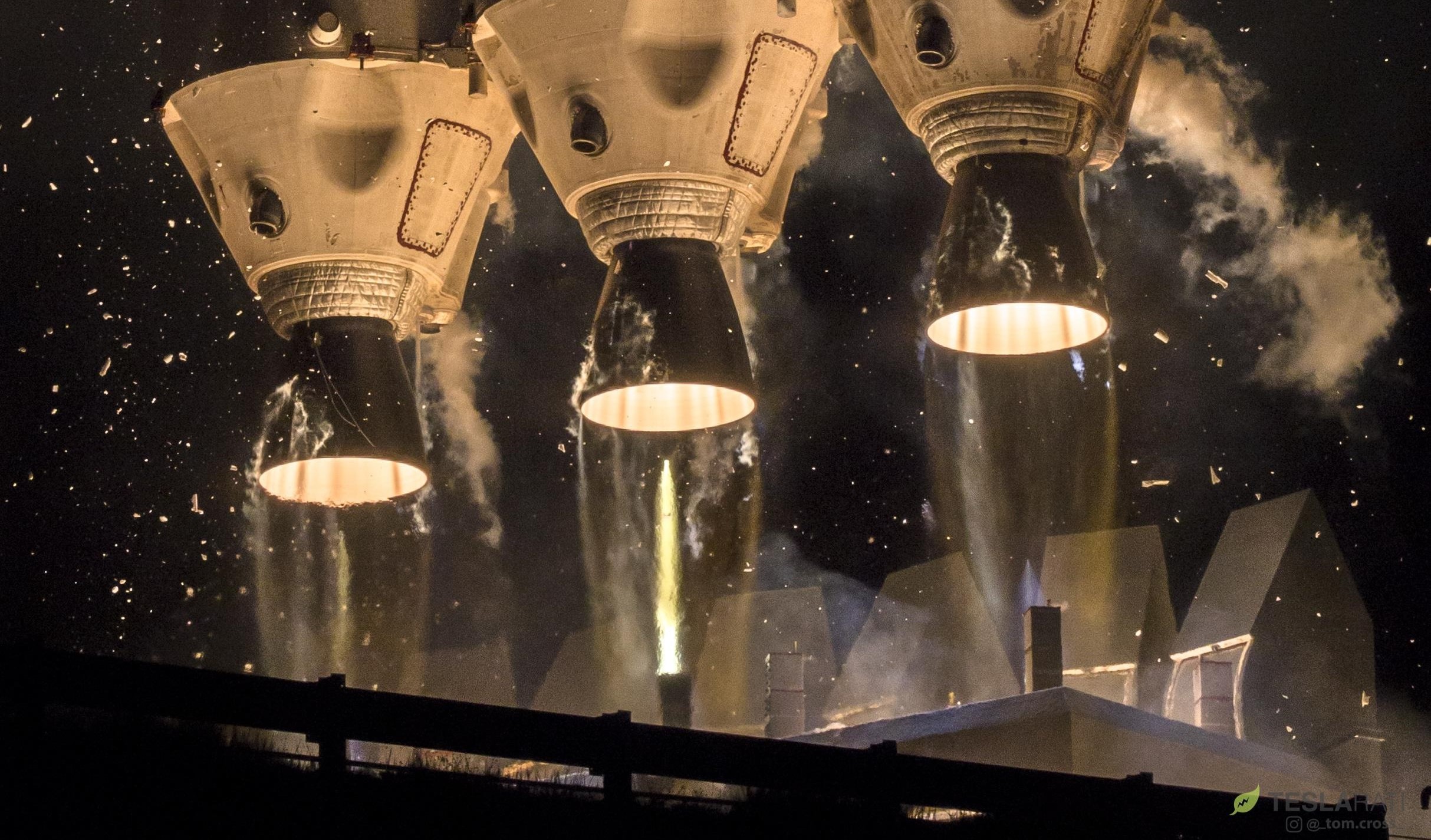

SpaceX
SpaceX’s Falcon Heavy eyed by Europe/Japan as ULA nails spectacular Delta Heavy launch
According to RussianSpaceWeb, SpaceX’s Falcon Heavy rocket is under serious consideration for launches of major European and Japanese payloads associated with the Lunar Orbital Platform-Gateway (formerly the Deep Space Gateway).
Currently targeting launch readiness in the mid-2020s, those heavy scientific and exploratory government payloads are eyeing Falcon Heavy at the same time as the United Launch Alliance’s (ULA) Delta IV Heavy – the most powerful operational rocket prior to FH’s debut – is busy wrapping up a scientific launch for NASA and prepping for another launch in September for its singular anchor customer, the National Reconnaissance Office (NRO).
https://twitter.com/_TomCross_/status/1028599075002896384
A breathtaking mission to the sun
United Launch Alliance (ULA) has just completed the ninth successful launch of its Delta IV Heavy rocket, originally developed by Boeing in the 1990s and debuted in 2004 before the company’s launch vehicle subsidiary joined forces with Lockheed Martin’s own rocket branch. Delta Heavy’s August 12th mission saw the rocket send a small NASA payload known as Parker Solar Probe (PSP) on a trajectory that will eventually place the craft closer to the Sun than any human-made object before it. In pursuit of a better understanding of how exactly our solar system’s namesake functions and behaves, PSP will also become the fastest object ever created by humans, traveling at an extraordinary 200 km/s (120 mi/s) at the zenith of its deepest periapses (the point at which PSP is closest to the sun).
In a fitting send-off for the small heat-shielded spacecraft, Delta IV Heavy’s launch was a spectacle to behold, with clear skies and the cover of darkness combining to magnify the best of the rocket’s telltale features. Upon ignition of its three massive RS-68 rocket engines, each producing over 700,000 lb-ft of thrust, the rocket is held down for several seconds in a process that famously culminates in what appears to be self-immolation just before liftoff, a consequence of the rocket burning off excess hydrogen fuel expelled during the ignition process. Unlike Falcon 9’s dirtier kerosene-oxygen combustion, Delta Heavy’s hydrogen and oxygen fuel produce a flame that is nearly transparent, aside from a bright orange tint created by materials in each engine’s ablative (read: designed to disintegrate) nozzle.
- Delta IV Heavy opts for ‘medium-well’ just before launch. (Tom Cross)
- The extraordinary might of Delta IV Heavy’s hydrolox-burning RS-68A engines, producing a combined 2.1 million pounds of thrust at liftoff. (Tom Cross)
- Delta IV Heavy takes to the sky on its tenth launch, with Parker Solar Probe in tow. (Tom Cross)
- Delta IV Heavy takes to the sky on its tenth launch, with Parker Solar Probe in tow. (Tom Cross)
While Delta IV Heavy has used one of its other nine successful launches for a NASA payload (a test flight of the Orion capsule), all seven remaining missions were conducted for the USAF (1) and the National Reconnaissance Office (NRO; 6), and all six remaining missions on the rocket’s manifest also happen to be for the NRO. Put simply, Delta IV Heavy would not exist today if the NRO did not have an explicit and unflappable need for the capabilities it offers. The primary downside is cost: DIVH costs at least $350 million and usually more than $400m per launch. Thankfully for ULA, the NRO has very few problems with money, and the agency’s estimated annual budget of $10 billion (2013) is more than half of NASA’s entire budget.
After Falcon Heavy’s successful debut, Delta IV Heavy’s monopoly over heavyweight NRO and USAF payloads is rapidly coming to an end, and both agencies are almost certainly attempting to equally quickly certify SpaceX’s newest rocket for critical national security space (NSS) launches. With that influx of the slightest hint of competition, Delta IV Heavy’s ~$400 million price tag starts to look rather painful in comparison to Falcon Heavy’s cost ceiling of around $150 million, potentially much less in the event that 1-3 of its boosters are recoverable. That competition likely won’t kill Delta IV Heavy, thanks entirely to the anchor support of the NRO, but it most certainly will guarantee that Delta Heavy is retired the moment ULA’s next-gen Vulcan rocket is ready to take over, likely no earlier than 2024.
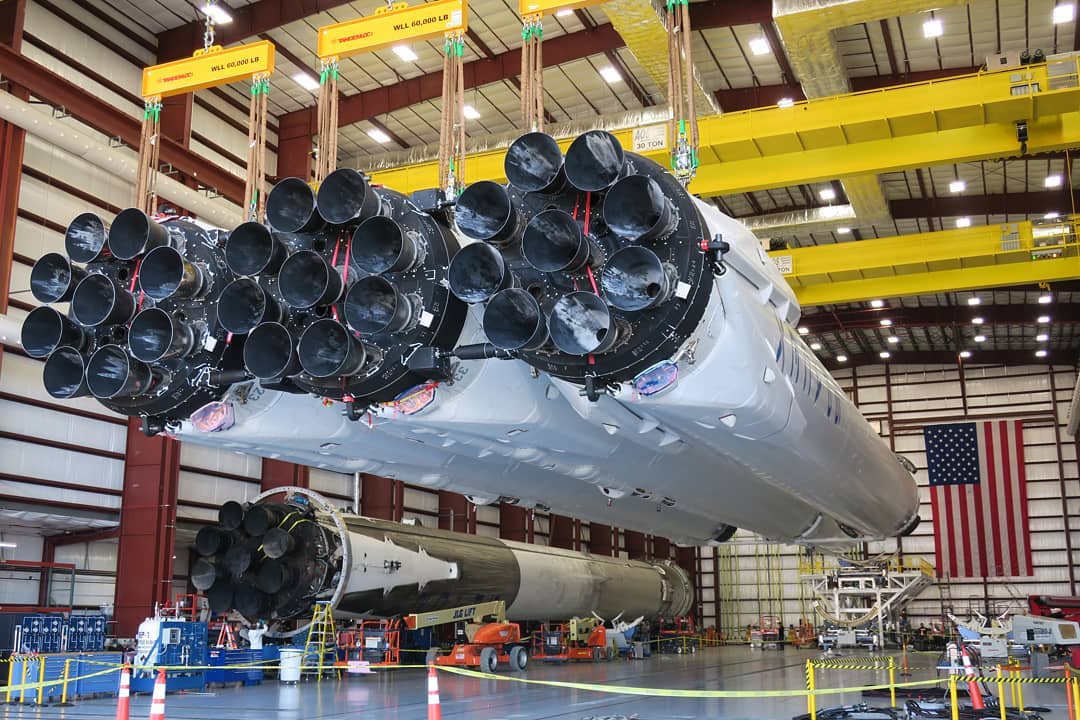
Outside of the NRO, however, there is a surprising amount of interest in Falcon Heavy for interesting (and heavy) government payloads, particularly with respect to the NASA/ESA/JAXA/Roscosmos cooperative lunar space station, known as the Lunar Orbital Platform-Gateway.
Falcon Heavy enters the mix
The first payload considering Falcon Heavy for launch services is the Japanese Space Agency’s (JAXA) HTV-X, and upgraded version of a spacecraft the country developed to assist in resupplying the International Space Station (ISS). HTV-X is primarily being designed with an ISS-resupply role still at the forefront, but Russianspaceweb recently reported that JAXA is seriously considering the development of a variant of the robotic spacecraft dedicated to resupplying the Lunar Orbital Platform-Gateway (LOPG; and I truly wish I were joking about both the name and acronym).
- JAXA’s first-generation HTV spacecraft on its fourth of nine planned launches, 2013. (NASA)
- JAXA’s first-generation HTV spacecraft on its fourth of nine planned launches, 2013. (NASA)
- The best available visualization of HTV-X, Japan’s upgraded and more affordable ISS resupply spacecraft. (JAXA)
As the name suggests, LOPG is fundamentally a shrunken, upgraded copy of the present-day International Space Station but with its low Earth orbit swapped for an orbit around the Moon. Why, you might ask? It happens that that question is far less sorted at this point than “how”, and there’s a fairly strong argument to be made that NASA is simply attempting to create a low-hanging-fruit destination for the chronically delayed SLS rocket and Orion spacecraft it routinely spends ~20% of its annual budget on. The alternatives to such a crewed orbital outpost are actually landing on the Moon and building a base or dramatically ramping development of foundations needed to enable the first human missions to Mars.
ARTICLE: Cislunar station gets thumbs up, new name in President's budget request – https://t.co/a1XhAPZ7ot
– By Philip Sloss.
(Numerous renders by Nathan Koga, including the epic one below) pic.twitter.com/j0cr2ze7qG
— NSF – NASASpaceflight.com (@NASASpaceflight) March 16, 2018
Regardless of the LOPG’s existential merits, a lot of energy (and money) is currently being funneled into planning and initial hardware development for the lunar station’s various modular segments. JAXA is currently analyzing ways to resupply LOPG and its crew complement with its HTV-X cargo spacecraft, currently targeting its first annual ISS resupply mission by the end of 2021. While JAXA will use its own domestic H-III rocket to launch HTV-X to the ISS, that rocket simply is not powerful enough to place a minimum of ~10,000 kg (22,000 lb) on a trans-lunar insertion (TLI) trajectory. As such, JAXA is examining SpaceX’s Falcon Heavy as a prime (and affordable) option: by recovering both side boosters on SpaceX’s drone ships and sacrificing the rocket’s center core, a 2/3rds-reusable Falcon Heavy should be able to send as much as 20,000 kg to TLI (lunar orbit), according to comments made by CEO Elon Musk.
- Falcon Heavy booster ice peeling away and vaporizing in the fire of the engines. (Photo: Tom Cross)
- Falcon Heavy’s launch debut from Pad 39A, February 2018. (SpaceX)
- Falcon Heavy’s side boosters seconds away from near-simultaneous landings at Landing Zones 1 and 2. (SpaceX)
That impressive performance would also be needed for another LOPG payload, this time for ESA’s 5-6 ton European System Providing Refueling Infrastructure and Telecommunications (ESPRIT) lunar station module. That component is unlikely to reach launch readiness before 2024, but ESA is already considering Falcon Heavy (over its own Ariane 6 rocket) in order to save some of the module’s propellant. Weighing 6 metric tons at most, Falcon Heavy could most likely launch ESPRIT while still recovering all three of its booster stages.
Regardless of the outcomes of those rather far-off launch contracts, it’s clear that some sort of market exists for Falcon Heavy and even more clear that its injection of competition into the stagnant and cornered heavy-lift launch segment is being globally welcomed with open arms.
For prompt updates, on-the-ground perspectives, and unique glimpses of SpaceX’s rocket recovery fleet check out our brand new LaunchPad and LandingZone newsletters!
News
SpaceX launches Ax-4 mission to the ISS with international crew
The SpaceX Falcon 9 launched Axiom’s Ax-4 mission to ISS. Ax-4 crew will conduct 60+ science experiments during a 14-day stay on the ISS.
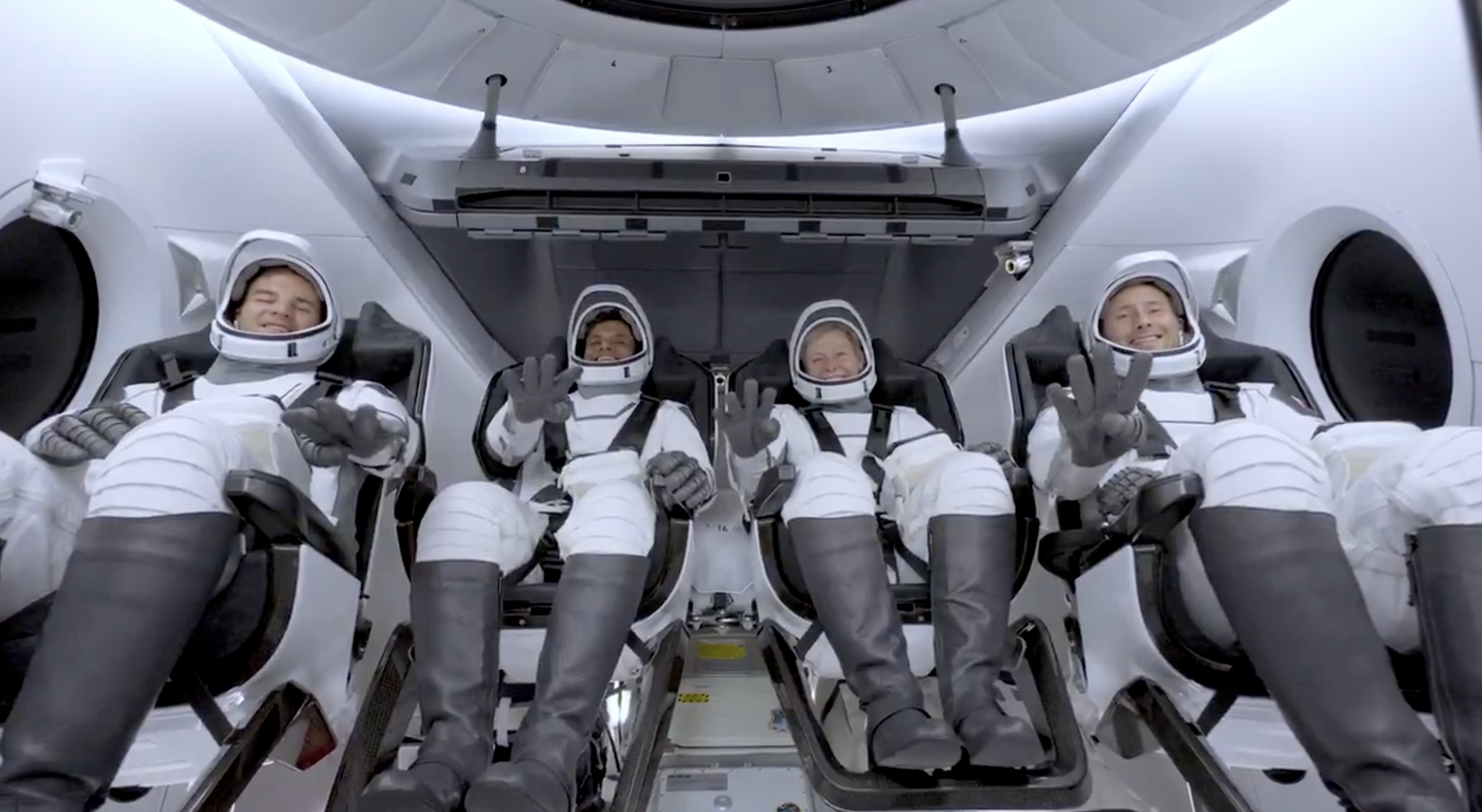
SpaceX launched the Falcon 9 rocket kickstarting Axiom Space’s Ax-4 mission to the International Space Station (ISS). Axiom’s Ax-4 mission is led by a historic international crew and lifted off from Kennedy Space Center’s Launch Complex 39A at 2:31 a.m. ET on June 25, 2025.
The Ax-4 crew is set to dock with the ISS around 7 a.m. ET on Thursday, June 26, 2025. Axiom Space, a Houston-based commercial space company, coordinated the mission with SpaceX for transportation and NASA for ISS access, with support from the European Space Agency and the astronauts’ governments.
The Ax-4 mission marks a milestone in global space collaboration. The Ax-4 crew, commanded by U.S. astronaut Peggy Whitson, includes Shubhanshu Shukla from India as the pilot, alongside mission specialists Sławosz Uznański-Wiśniewski from Poland and Tibor Kapu from Hungary.
“The trip marks the return to human spaceflight for those countries — their first government-sponsored flights in more than 40 years,” Axiom noted.
Shukla’s participation aligns with India’s Gaganyaan program planned for 2027. He is the first Indian astronaut to visit the ISS since Rakesh Sharma in 1984.
Axiom’s Ax-4 mission marks SpaceX’s 18th human spaceflight. The mission employs a Crew Dragon capsule atop a Falcon 9 rocket, designed with a launch escape system and “two-fault tolerant” for enhanced safety. The Axiom mission faced a few delays due to weather, a Falcon 9 leak, and an ISS Zvezda module leak investigation by NASA and Roscosmos before the recent successful launch.
As the crew prepares to execute its scientific objectives, SpaceX’s Ax-4 mission paves the way for a new era of inclusive space research, inspiring future generations and solidifying collaborative ties in the cosmos. During the Ax-4 crew’s 14-day stay in the ISS, the astronauts will conduct nearly 60 experiments.
“We’ll be conducting research that spans biology, material, and physical sciences as well as technology demonstrations,” said Whitson. “We’ll also be engaging with students around the world, sharing our experience and inspiring the next generation of explorers.”
SpaceX’s Ax-4 mission highlights Axiom’s role in advancing commercial spaceflight and fostering international partnerships. The mission strengthens global space exploration efforts by enabling historic spaceflight returns for India, Poland, and Hungary.
News
Starlink Cellular’s T-Mobile service to grow with third-party app data
From Oct 2025, T-Satellite will enable third-party apps in dead zones! WhatsApp, X, AccuWeather + more coming soon.

Starlink Cellular’s T-Mobile service will expand with third-party app data support starting in October, enhancing connectivity in cellular dead zones.
T-Mobile’s T-Satellite, supported by Starlink, launches officially on July 23. Following its launch, T-Mobile’s Starlink Cellular service will enable data access for third-party apps like WhatsApp, X, Google, Apple, AccuWeather, and AllTrails on October 1, 2025.
T-Mobile’s Starlink Cellular is currently in free beta. T-Satellite will add MMS support for Android phones on July 23, with iPhone support to follow. MMS support allows users to send images and audio clips alongside texts. By October, T-Mobile will extend emergency texting to all mobile users with compatible phones, beyond just T-Mobile customers, building on its existing 911 texting capability. The carrier also provides developer tools to help app makers integrate their software with T-Satellite’s data service, with plans to grow the supported app list.
T-Mobile announced these updates during an event celebrating an Ookla award naming it the best U.S. phone network, a remarkable turnaround from its last-place ranking a decade ago.
“We not only dream about going from worst to best, we actually do it. We’re a good two years ahead of Verizon and AT&T, and I believe that lead is going to grow,” said T-Mobile’s Chief Operating Officer Srini Gopalan.
T-Mobile unveiled two promotions for its Starlink Cellular services to attract new subscribers. A free DoorDash DashPass membership, valued at $10/month, will be included with popular plans like Experience Beyond and Experience More, offering reduced delivery and service fees. Meanwhile, the Easy Upgrade promotion targets Verizon customers by paying off their phone balances and providing flagship devices like the iPhone 16, Galaxy S25, or Pixel 9.
T-Mobile’s collaboration with SpaceX’s Starlink Cellular leverages orbiting satellites to deliver connectivity where traditional networks fail, particularly in remote areas. Supporting third-party apps underscores T-Mobile’s commitment to enhancing user experiences through innovative partnerships. As T-Satellite’s capabilities grow, including broader app integration and emergency access, T-Mobile is poised to strengthen its lead in the U.S. wireless market.
By combining Starlink’s satellite technology with strategic promotions, T-Mobile is redefining mobile connectivity. The upcoming third-party app data support and official T-Satellite launch mark a significant step toward seamless communication, positioning T-Mobile as a trailblazer in next-generation wireless services.
News
Starlink expansion into Vietnam targets the healthcare sector
Starlink aims to deliver reliable internet to Vietnam’s remote clinics, enabling telehealth and data sharing.

SpaceX’s Starlink expansion into Vietnam targets its healthcare sector. Through Starlink, SpaceX seeks to drive digital transformation in Vietnam.
On June 18, a SpaceX delegation met with Vietnam’s Ministry of Health (MoH) in Hanoi. SpaceX’s delegation was led by Andrew Matlock, Director of Enterprise Sales, and the discussions focused on enhancing connectivity for hospitals and clinics in Vietnam’s remote areas.
Deputy Minister of Health (MoH) Tran Van Thuan emphasized collaboration between SpaceX and Vietnam. Tran stated: “SpaceX should cooperate with the MoH to ensure all hospitals and clinics in remote areas are connected to the StarLink satellite system and share information, plans, and the issues discussed by members of the MoH. The ministry is also ready to provide information and send staff to work with the corporation.”
The MoH assigned its Department of Science, Technology, and Training to work with SpaceX. Starlink Vietnam will also receive support from Vietnam’s Department of International Cooperation. Starlink Vietnam’s agenda includes improving internet connectivity for remote healthcare facilities, developing digital infrastructure for health examinations and remote consultations, and enhancing operational systems.
Vietnam’s health sector is prioritizing IT and digital transformation, focusing on electronic health records, data centers, and remote medical services. However, challenges persist in deploying IT solutions in remote regions, prompting Vietnam to seek partnerships like SpaceX’s.
SpaceX’s Starlink has a proven track record in healthcare. In Rwanda, its services supported 40 health centers, earning praise for improving operations. Similarly, Starlink enabled remote consultations at the UAE’s Emirati field hospital in Gaza, streamlining communication for complex medical cases. These successes highlight Starlink’s potential to transform Vietnam’s healthcare landscape.
On May 20, SpaceX met with Vietnam’s Ministry of Industry and Trade, announcing a $1.5 billion investment to provide broadband internet, particularly in remote, border, and island areas. The first phase includes building 10-15 ground stations across the country. This infrastructure will support Starlink’s healthcare initiatives by ensuring reliable connectivity.
Starlink’s expansion in Vietnam aligns with the country’s push for digital transformation, as outlined by the MoH. By leveraging its satellite internet expertise, SpaceX aims to bridge connectivity gaps, enabling advanced healthcare services in underserved regions. This collaboration could redefine Vietnam’s healthcare infrastructure, positioning Starlink as a key player in the nation’s digital future.
-

 Elon Musk2 weeks ago
Elon Musk2 weeks agoTesla investors will be shocked by Jim Cramer’s latest assessment
-

 Elon Musk2 days ago
Elon Musk2 days agoxAI launches Grok 4 with new $300/month SuperGrok Heavy subscription
-

 Elon Musk4 days ago
Elon Musk4 days agoElon Musk confirms Grok 4 launch on July 9 with livestream event
-

 News1 week ago
News1 week agoTesla Model 3 ranks as the safest new car in Europe for 2025, per Euro NCAP tests
-

 Elon Musk2 weeks ago
Elon Musk2 weeks agoA Tesla just delivered itself to a customer autonomously, Elon Musk confirms
-

 Elon Musk1 week ago
Elon Musk1 week agoxAI’s Memphis data center receives air permit despite community criticism
-

 News2 weeks ago
News2 weeks agoXiaomi CEO congratulates Tesla on first FSD delivery: “We have to continue learning!”
-

 Investor's Corner2 weeks ago
Investor's Corner2 weeks agoTesla gets $475 price target from Benchmark amid initial Robotaxi rollout

